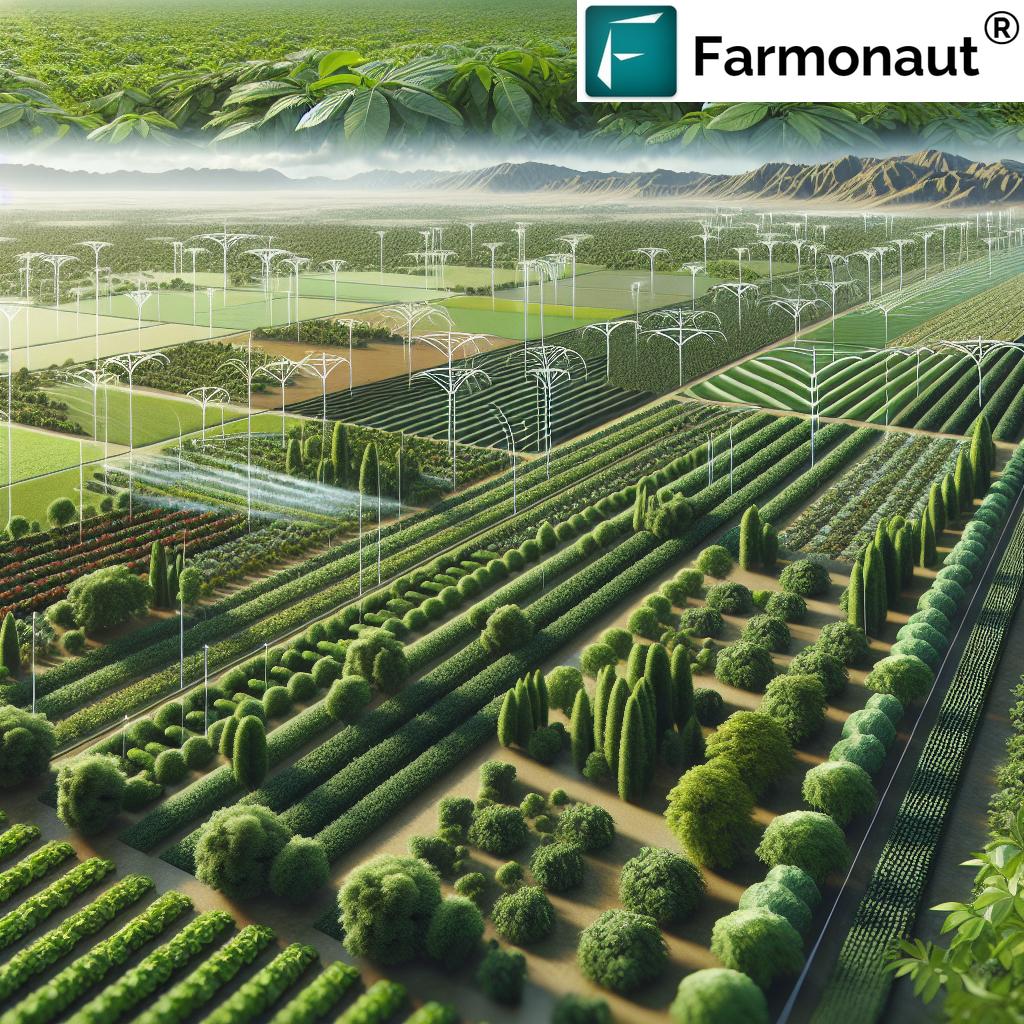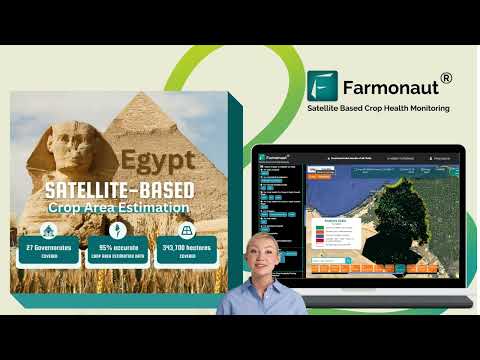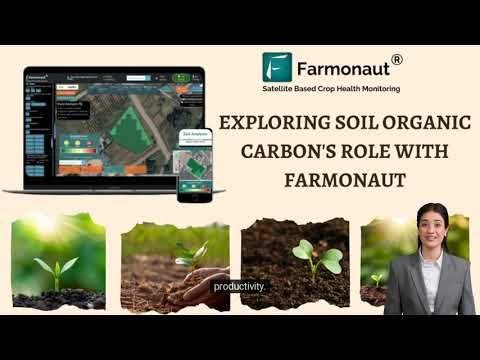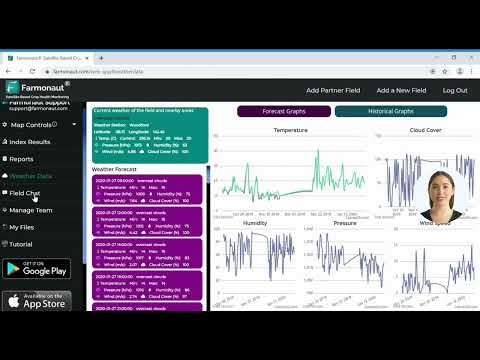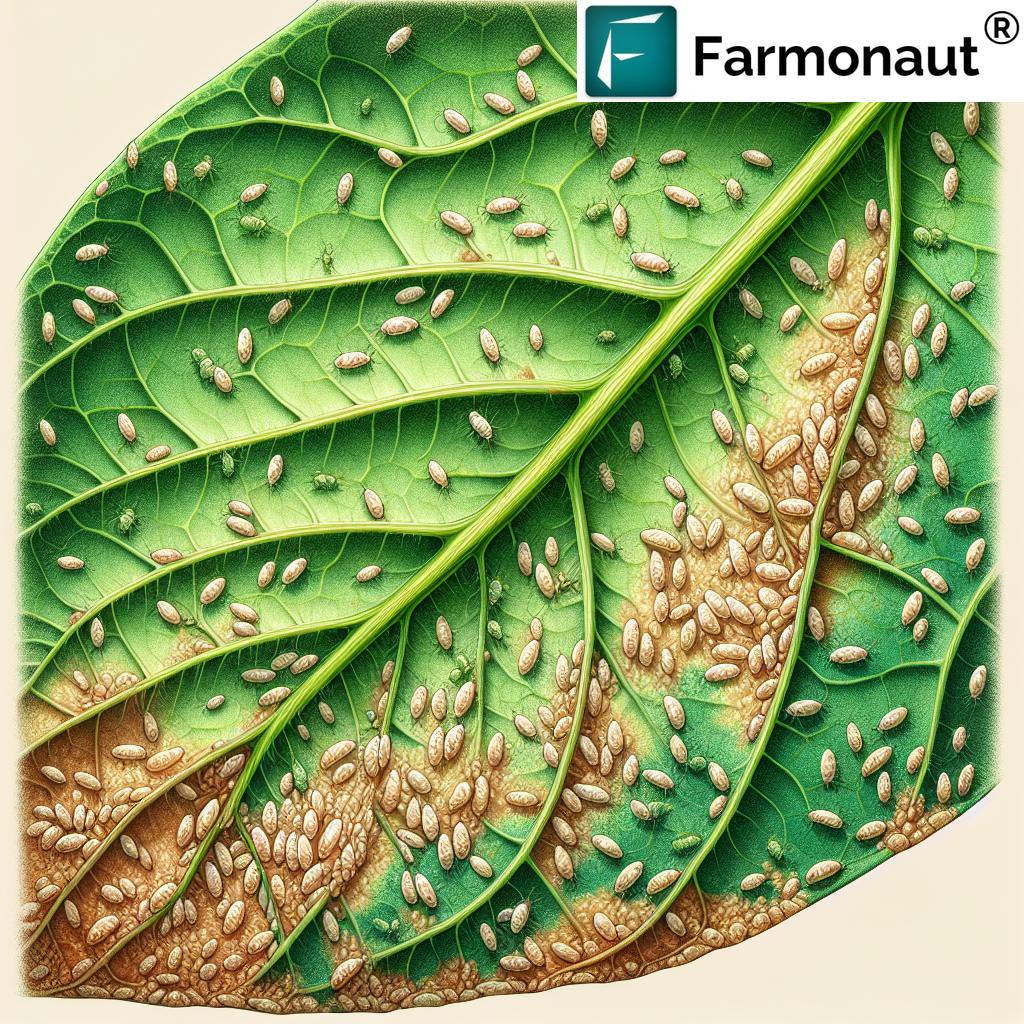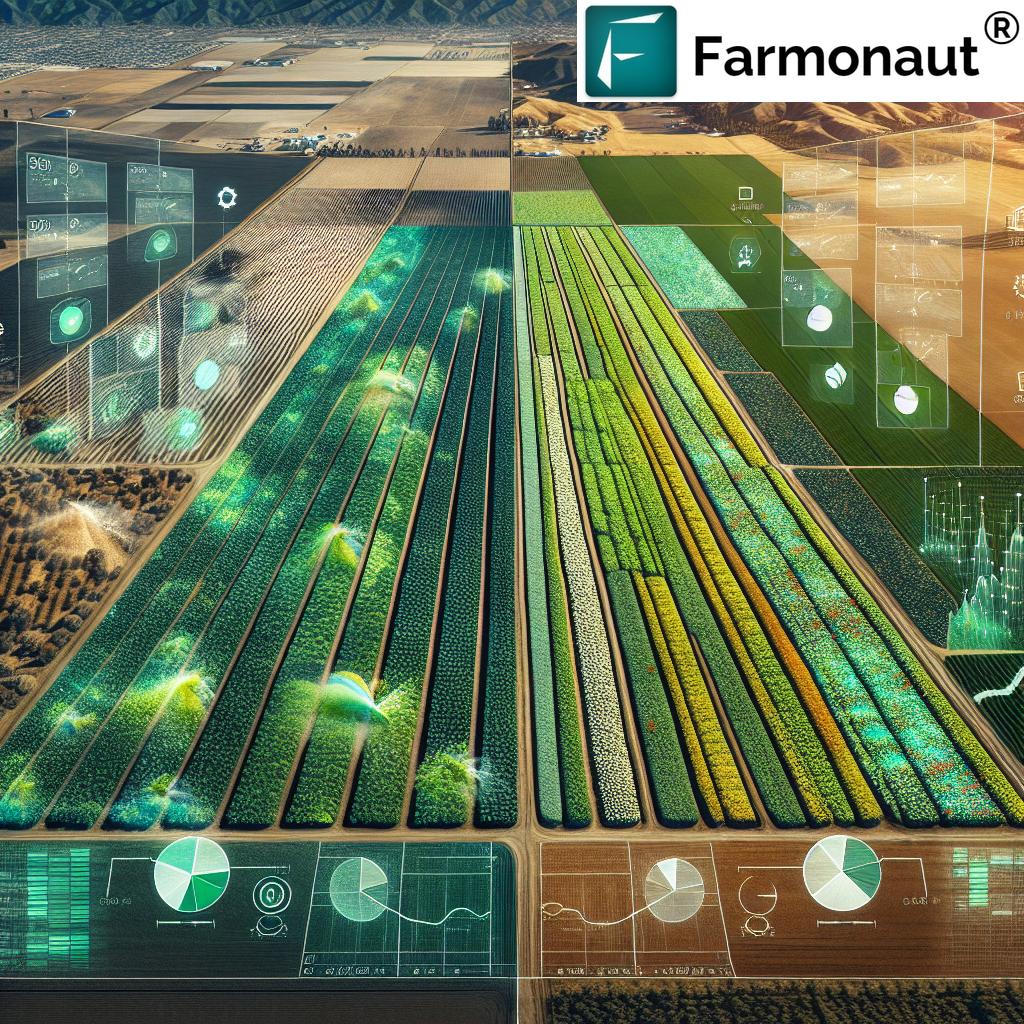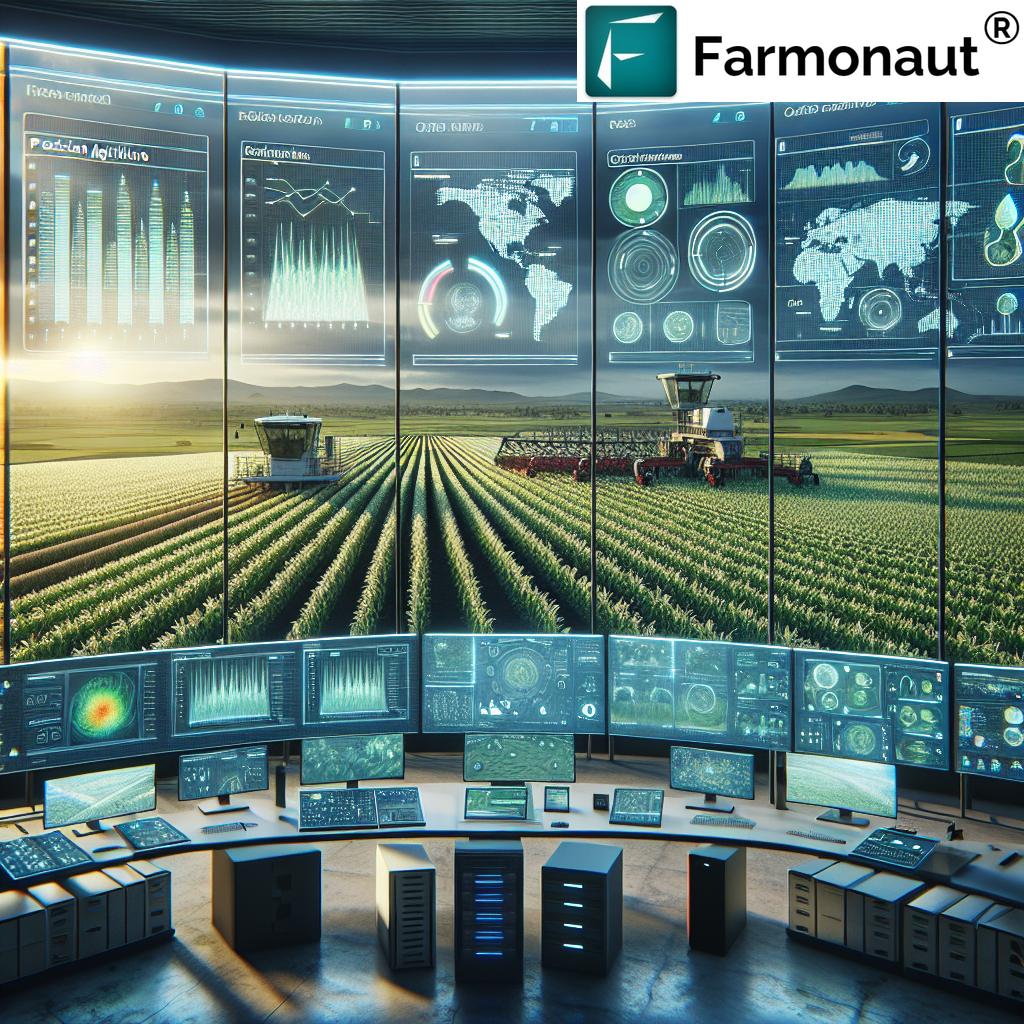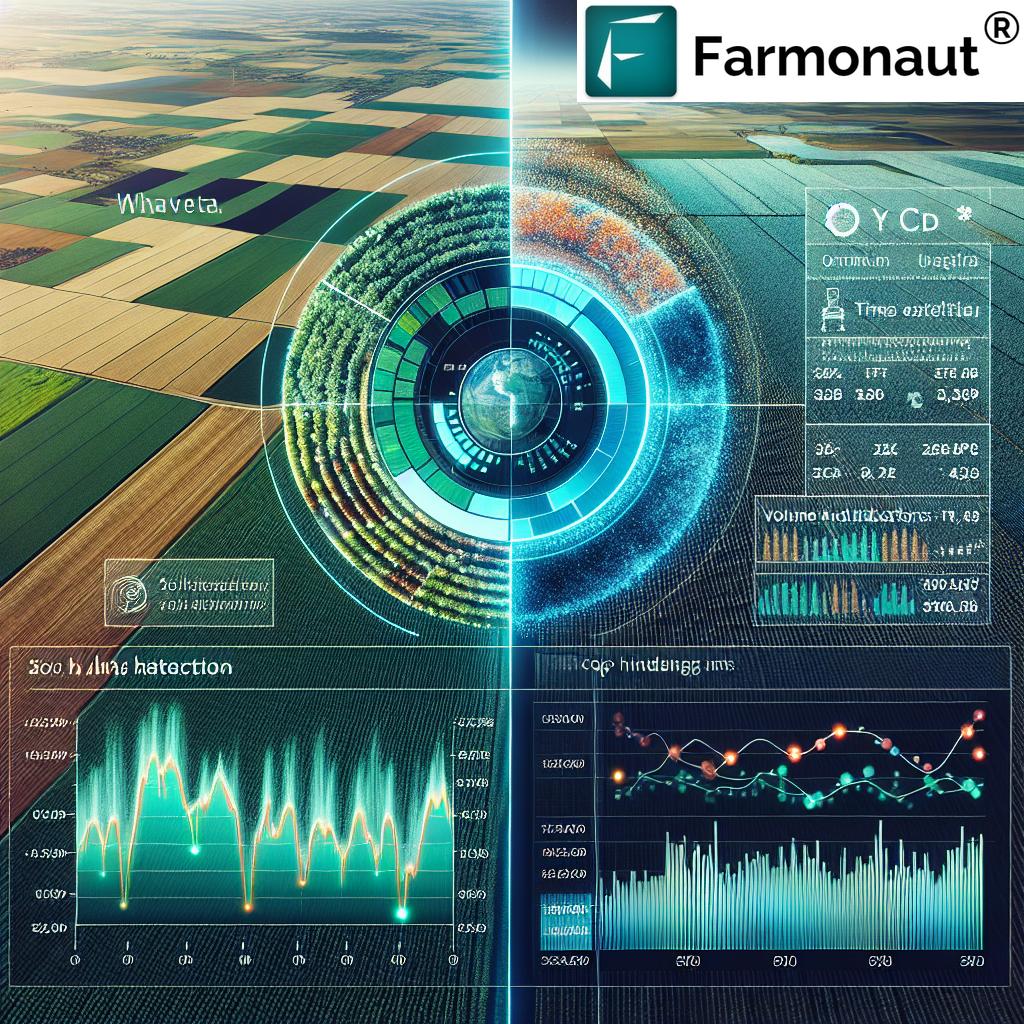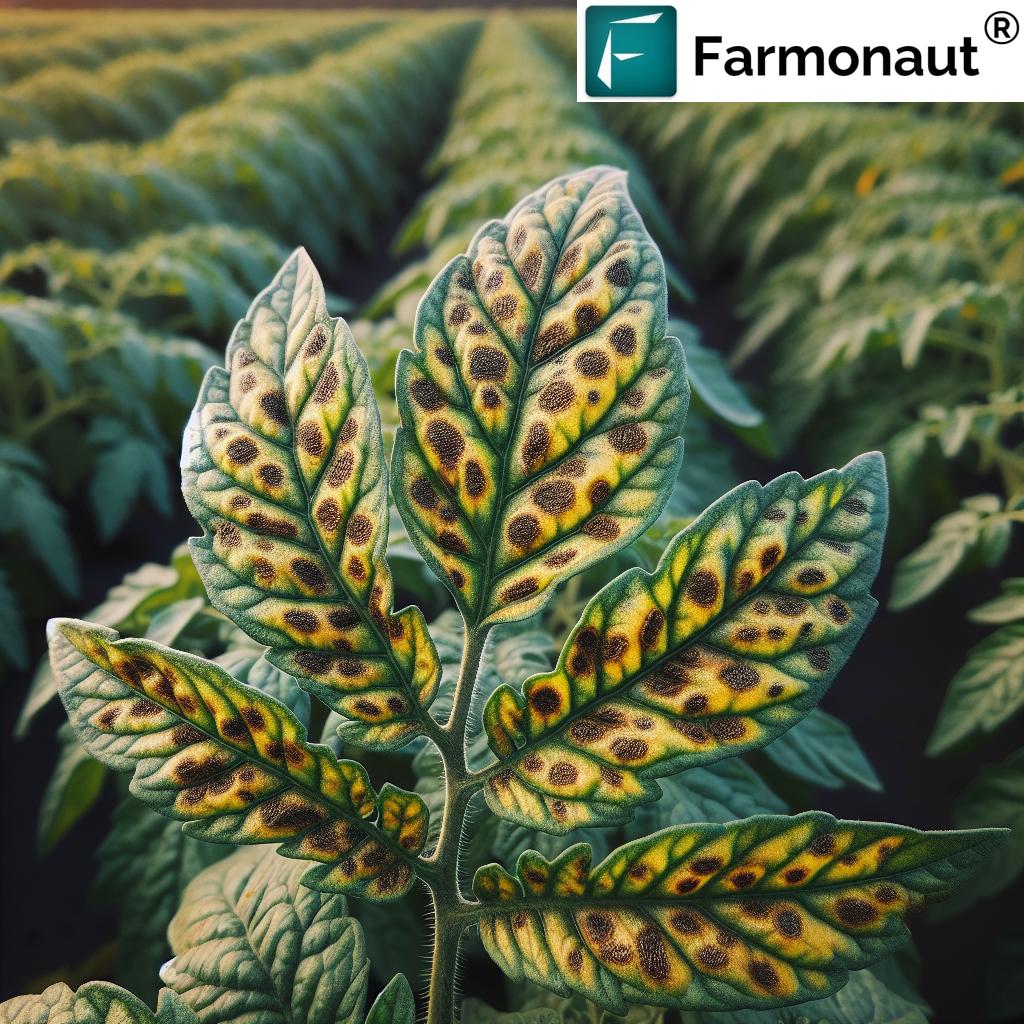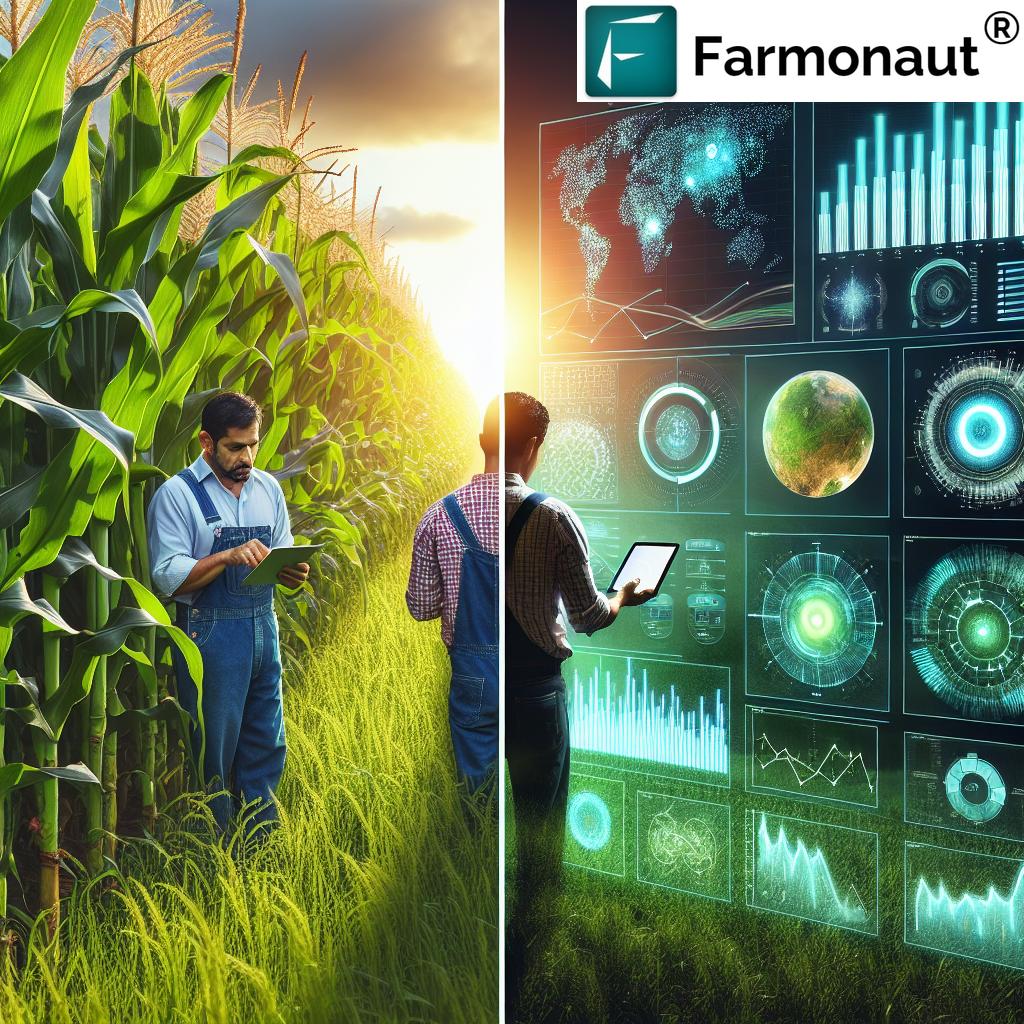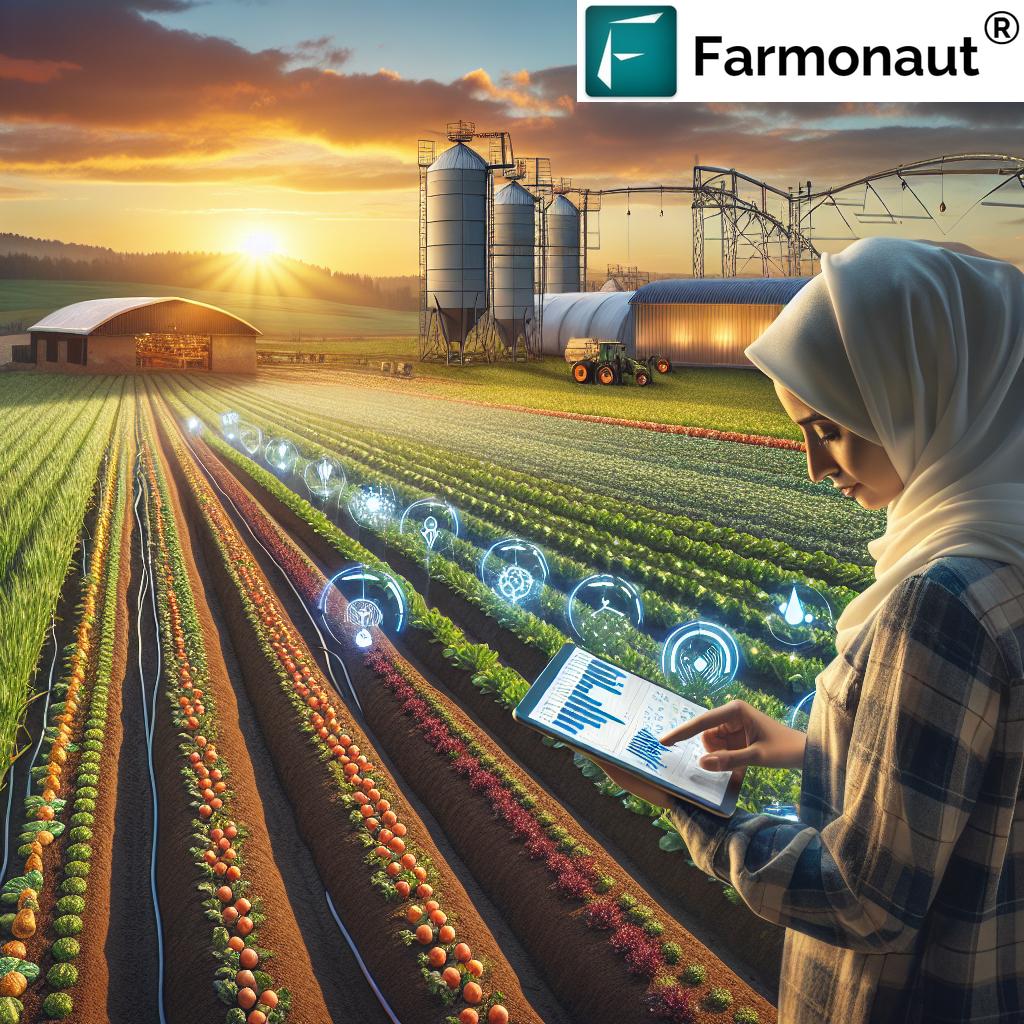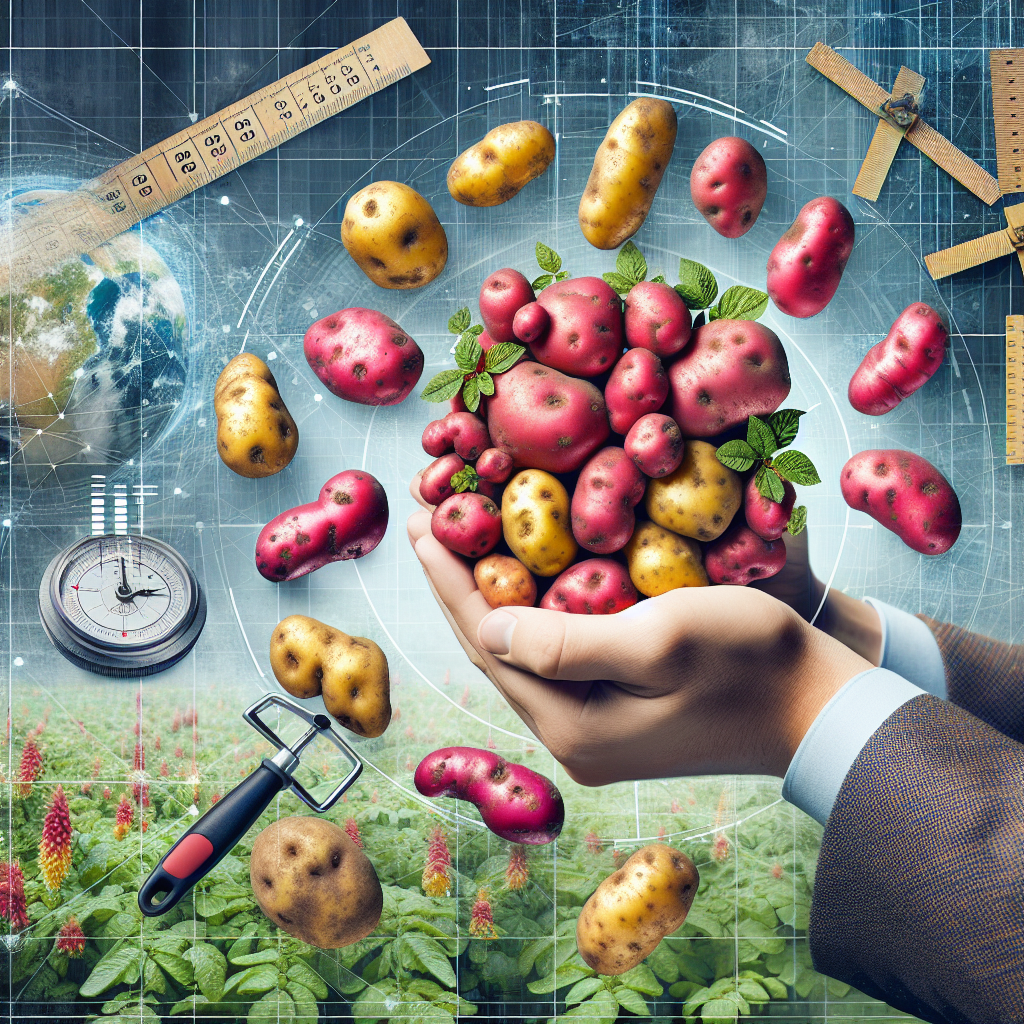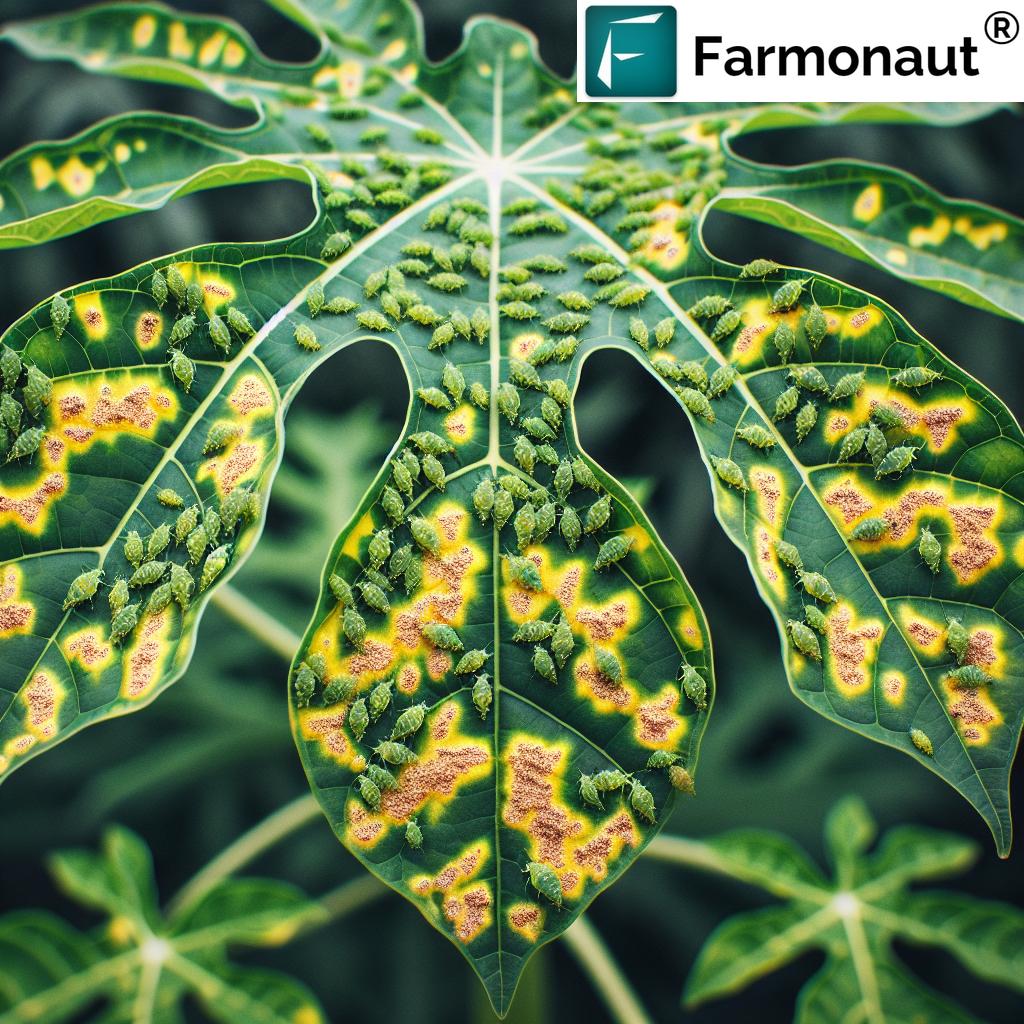Agriculture Solutions: Unbelievable Farming Hacks Revealed!
“Precision agriculture can increase crop yields by up to 20% using data-driven soil and plant health analysis.”
- Introduction: The Technology-Driven Future of Agriculture
- Precision Agriculture: The Science Behind Smarter Farming
- Drone Technology in Agriculture and Aerial Imaging
- Innovative Livestock Monitoring Solutions
- Agroforestry Solutions: Blending Nature and Farming
- Soil Health Management and Sustainable Soil Practices
- Integrated Pest Management (IPM): Reducing Chemical Usage
- Smart Irrigation Systems for Water Efficiency
- Vertical Farming and Hydroponics: Urban Agriculture Reimagined
- Data-Driven Farming: AI, Analytics and Decision Making
- Farmer-Managed Natural Regeneration (FMNR): Restoring Land the Natural Way
- Farmonaut’s Advanced Technologies for Modern Agriculture
- Impact of Modern Agricultural Innovations
- FAQ: Innovative Agriculture Solutions
- Conclusion: Shaping an Efficient, Sustainable Future
Introduction: The Technology-Driven Future of Agriculture
Agriculture stands firmly as the backbone of human civilization, constantly evolving to meet the increasing demands of a growing global population. Over the years, our farming and forestry practices have been revolutionized by innovative solutions that improve soil health, crop yields, and overall farm management. As the world faces pressing challenges such as climate change, water scarcity, and sustainability concerns, integration of precision agriculture, sustainable farming practices, and groundbreaking technologies is no longer a luxury—it’s essential.
This comprehensive guide delves deep into the agricultural solutions and “unbelievable farming hacks” that are transforming modern agriculture. From soil moisture sensors and drone technology in agriculture to vertical farming and hydroponics and agroforestry solutions, we will explore the latest trends, innovations, and tools enhancing sustainability, efficiency, and productivity in the sector.
Let’s journey through the key hacks and solutions reshaping agriculture for a more sustainable and productive future.
Precision Agriculture: The Science Behind Smarter Farming
Precision agriculture represents a technology-driven approach that leverages data, sensors, IoT devices, GPS technology, and analytics to optimize every aspect of crop management. By understanding and managing variations in the field, we are able to apply water, fertilizers, and pesticides much more accurately and efficiently.
Key advantages of precision agriculture include:
- Reducing resource waste and minimizing the environmental impact of chemical usage
- Increasing yield by providing crops with exactly what they need
- Allowing for targeted application rather than one-size-fits-all methods
For instance, soil health sensors provide instant feedback on moisture levels, pH, and nutrient content, so that irrigation and fertilization plans can be optimized in real time. Farmonaut takes this a step further, offering satellite-based crop health monitoring services accessible via app and API, ensuring that even small and medium-sized farms can affordably benefit from advanced data-driven farming.
With these data-powered systems, we’re not just growing—we’re innovating:
- Maximizing efficiency through monitoring field variations and responding quickly to detected needs;
- Threshold-based interventions for pest management and disease control;
- Transparency and traceability through platforms integrating blockchain (see Farmonaut’s Product Traceability for details).
Drone Technology in Agriculture and Aerial Imaging
Unmanned aerial vehicles (UAVs) or drones are rewriting the rulebook for aerial imaging and field monitoring. Equipped with advanced sensors and high-resolution cameras, drones allow farmers to:
- Quickly survey large areas and monitor for variations in crop health and soil conditions
- Detect early pest infestations, water stress, or nutrient deficiencies with pinpoint accuracy
- Reduce labor costs and enable precise application of seeds, pesticides, or fertilizers, lowering chemical use
- Generate detailed maps that inform replanting, irrigation, and other management practices
The aerial perspective uniquely enables timely intervention, minimizing losses and dramatically improving yields.
With drone-collected data feeding into AI-powered platforms like Farmonaut, monitoring fields and making informed decisions has never been easier.
“Sustainable farming practices have reduced chemical fertilizer use by 30% in innovative tech-driven farms worldwide.”
Innovative Livestock Monitoring Solutions
Ensuring the health and productivity of our livestock is a critical component in agriculture. With the integration of smart devices, IoT sensors, and cloud-based systems, farmers can continuously monitor vital signs, movement and reproductive cycles of animals. These technologies offer:
- Early detection of illness and timely medical intervention
- Improved breeding program outcomes and animal welfare
- Greater efficiency in farm management by tracking herds, feed, and activity remotely
Modern livestock monitoring enhances sustainability and productivity by assuring that only healthy animals are raised, and all necessary actions are taken at the right time.
By using platforms equipped with secure data streams and real-time analytics, we can provide our animals with the best possible care, reduce losses, and improve the bottom line.
Agroforestry Solutions: Blending Nature and Farming
Agroforestry solutions integrate trees and shrubs into traditional farming practices, combining the best aspects of agriculture and forestry. This method:
- Enhances biodiversity and supports ecosystem services
- Improves soil health by reducing erosion and increasing nutrient cycling
- Protects crops from wind, sun, and drought through windbreaks and trees
- Provides additional revenue streams: fruits, nuts, timber, honey, and more
Common agroforestry practices include:
- Windbreaks: Planting rows of trees/shrubs to protect fields and livestock, improve microclimates, and lower wind erosion;
- Riparian Buffers: Planting vegetation along rivers/streams to filter runoff, prevent erosion and enhance water quality;
- Silvopasture: Grazing animals among trees for dual benefits: shade and enhanced vegetation for fodder;
- Alley Cropping: Growing crops between rows of trees to diversify production and improve land efficiency.
By combining trees and crops, agroforestry acts as a living insurance policy—boosting economic resilience and sustainability.
If you’re managing large tracts of farm or plantation land, access tools for sustainable agroforestry and forestry advisory via Farmonaut’s Crop Plantation and Forestry Advisory Tools.
Soil Health Management and Sustainable Soil Practices
Soil is the foundation of agricultural productivity. Without healthy, living soil, there is no sustainable crop production. Sustainable soil management employs practices that maintain and enhance soil fertility, structure, and organic content. This includes:
- No-till farming to reduce disturbance and protect organic matter
- Using cover crops to protect bare soil, minimize erosion, and enhance nutrient cycling
- Rotating crops to restore and maintain soil health
- Applying only as much fertilizer as data shows is needed, reducing resource use and chemical runoff
Farmonaut’s Carbon Footprinting Suite allows us to measure and manage our environmental impact—from soil health to emissions—using real-time data.
Innovative agricultural technologies are also key to unlocking soil organic carbon and ensuring lasting sustainability in farming systems.
Integrated Pest Management (IPM): Reducing Chemical Usage
Integrated pest management (IPM) is an eco-friendly solution for controlling pests while reducing chemical pesticide usage. It deploys a combination of biological, cultural, physical, and minimal chemical interventions, such as:
- Biological control: Introducing natural predators or beneficial insects
- Monitoring pest levels with sensors and only applying treatments as needed
- Crop rotation, trap cropping, and other cultural techniques
- Targeted use of organic or reduced-risk pesticides when thresholds are met
Using data analytics and AI advisory—such as Farmonaut’s Jeevn AI Advisory System—lets us predict pest outbreaks and undertake early, targeted interventions. This shifts the focus from blanket spraying to precision interventions, resulting in better long-term yields and environmental stewardship.
Smart Irrigation Systems for Water Efficiency
Water management is becoming a cornerstone of sustainable farming practices, especially as many regions face water scarcity. Smart irrigation systems use sensors, weather data, and automation to tailor watering schedules and amounts precisely to crop needs, based on:
- Soil moisture levels and real-time weather patterns
- Crop growth stage and predicted water requirements
- Optimizing irrigation application across fields of all sizes
These technologies help:
- Reduce water waste and associated costs
- Improve yields by maintaining optimal crop conditions
- Allowing remote management and automated adjustment for convenience and efficiency
Implementing a smart irrigation system can mean the difference between a thriving field and a struggling one, especially in rapidly changing climates.
Vertical Farming and Hydroponics: Urban Agriculture Reimagined
Urbanization and declining availability of arable land have inspired vertical farming and hydroponics, which deliver high-efficiency, sustainable production even in compact spaces.
Vertical farming uses stacked layers—often under LED lights in climate-controlled environments—to maximize yield per square meter. Hydroponics grows crops in nutrient-rich water instead of soil, allowing for precise nutrient, pH and moisture management.
Key advantages include:
- Year-round production, independent of weather
- Dramatic reduction in water usage (up to 90% less than traditional systems)
- Minimal need for chemical pesticides and fertilizers
- Utilization of underused or urban areas for food production
Both systems enable sustainable intensification and optimize resource efficiency for our growing population.
Data-Driven Farming: AI, Analytics and Decision Making
Today’s agriculture is powered by big data and artificial intelligence. The move towards data-driven farming allows farmers to:
- Analyze weather, soil, crop, and market data to predict risks and opportunities
- Use predictive analytics and AI-based recommendations for smarter planting, harvesting, and resource allocation
- Access remote farm management solutions to control inputs, monitor fields, and manage resources from anywhere
Platforms like Farmonaut provide not only satellite-derived crop and soil health data but also customizable API access (Explore Farmonaut’s Satellite and Weather Data API, API Developer Docs), so businesses and researchers can develop their own innovative solutions using the latest technologies.
This move towards informed decisions helps optimize every step of the operation, maximize yields, and reduce waste.
Farmer-Managed Natural Regeneration (FMNR): Restoring Land the Natural Way
Farmer-Managed Natural Regeneration (FMNR) is a low-cost, sustainable technique to restore degraded land, especially valuable in areas threatened by desertification. FMNR leverages the existing rootstock and natural regrowth of trees, allowing native shrubs and vegetation to reclaim denuded spaces.
- Increases biodiversity and improves soil fertility
- Enhances resilience against drought and erosion
- Provides additional resources (e.g., firewood, fodder) for local communities
- Improves microclimates and supports sustainable intensification of agriculture
FMNR is a living example of how working with natural systems can boost productivity and sustainability for the future of farming.
Ready for Smart Farming? Try Farmonaut’s App
Access advanced farm management and crop monitoring tools on the go! Use the Farmonaut app for real-time data, satellite-based insights, and farm analytics, whether you’re in the field or at your desk.
Farmonaut’s Advanced Technologies for Modern Agriculture
Farmonaut is at the forefront of making precision agriculture affordable and accessible worldwide. Let’s see how their integrated platform helps us revolutionize productive, sustainable farming and forestry.
Key Farmonaut Features:
- Satellite-Based Crop Health Monitoring: Get real-time, multispectral imagery on crop health, soil moisture, and nutrient stress. This empowers farmers and agribusinesses to optimize irrigation, fertilizer application, and pest control–See Large Scale Farm Management Tools.
- AI-Based Advisory Systems (Jeevn): Personalized insights, weather predictions, and agronomic advice drawing on satellite data to boost productivity and efficiency.
- Blockchain-Based Product Traceability: Complete transparency and trust in your supply chain with end-to-end blockchain tracking. This is especially valuable for agri-food and textile businesses. Improve Supply Chain Transparency Here.
- Fleet & Resource Management: Efficient management of agricultural machinery, reducing operational costs and enhancing safety. Optimize Fleet & Farm Resources.
- Carbon Footprinting: Track and reduce your farm’s carbon emissions and environmental footprint. Measure Carbon Impact.
- Crop Loan & Insurance Verification: Use satellite-based verification to streamline crop loan applications and insurance claims. Learn about Satellite Verification.
Farmonaut’s model is highly scalable, cost-effective, and tailored for individual farmers, large agribusinesses, and government agencies. Its apps and APIs democratize access to data-driven agriculture—making the benefits of precision agriculture universal.
Farmonaut Subscription Plans
Choose from a range of subscription plans tailored to every farming need, big or small. Easily manage your farm, monitor crops, and benefit from the latest innovative agricultural technologies.
Impact of Modern Agricultural Innovations
The following table highlights the effects of core innovations and smart agriculture solutions on yield, cost, soil health, and sustainability:
| Technology/Practice | Estimated Increase in Yield (%) | Estimated Cost Savings (%) | Effect on Soil Health | Sustainability Impact |
|---|---|---|---|---|
| Precision Agriculture Tools | 10–20% | 15–25% | Preserves structure & organic content through precise input application | Reduces waste & chemical input, boosts sustainability |
| Sustainable Irrigation (Smart Irrigation Systems) | 10–18% | 20–35% | Prevents erosion, preserves moisture | Major water conservation, improves resilience |
| Drone Monitoring & Aerial Imaging | 8–15% | 10–18% | Enables early problem detection, aids soil conservation | Minimizes input use, timely interventions lessen losses |
| Biodegradable/Organic Fertilizers | 5–12% | 8–15% | Enhances long-term soil fertility | Reduces pollution, supports organic farming |
| Agroforestry Solutions | 5–25% (long-term) | 10–20% | Rebuilds soil, reduces erosion, adds nutrients | Promotes biodiversity & ecosystem restoration |
| Integrated Pest Management (IPM) | 7–14% | 12–20% | Prevents chemical buildup, encourages balanced ecosystem | Protects beneficial species, cuts pesticide use |
| Vertical Farming & Hydroponics | 20–30% | 15–30% | Requires no soil—prevents erosion, allows urban food production | Dramatically less water, less land use, year-round growth |
FAQ: Innovative Agriculture Solutions
Precision agriculture uses technology to analyze and manage soil, water, and crop health in real-time. This allows us to apply inputs—like water, fertilizers, and pesticides—only where needed, reducing waste, minimizing environmental impact, and increasing yields.
Q2: How do smart irrigation systems conserve water?
Smart irrigation systems use sensors and weather analytics to monitor soil moisture and crop needs. They automate and optimize irrigation schedules, providing only the amount of water required. This dramatically reduces water usage and associated costs.
Q3: Are agroforestry solutions beneficial for small farms?
Yes, agroforestry practices can be scaled to fit farms of all sizes. Integrating trees and shrubs into crop or livestock systems improves soil health, biodiversity, and long-term farm sustainability.
Q4: Can data-driven farming help in pest and disease management?
Absolutely. AI and analytics detect early warning signs of pest and disease outbreaks. By providing data-driven, site-specific recommendations, farmers can deploy targeted interventions—often before visible symptoms emerge.
Q5: How do I get started using Farmonaut’s advanced solutions?
Farmonaut offers both mobile and web-based solutions, easily accessible worldwide. Start by downloading the app or visiting the web platform. For advanced integrations, check out Farmonaut’s API and Developer Documentation.
Conclusion: Shaping an Efficient, Sustainable Future
As we’ve explored, precision agriculture, sustainable farming practices, and innovative technologies are redefining what’s possible in agriculture. These solutions are not only about maximizing crop yields or minimizing input costs; they’re about ensuring a healthier, more resilient planet for generations to come.
By making these advanced tools and practices affordable and widely accessible, platforms like Farmonaut are empowering farmers, agribusinesses, and entire countries to transition seamlessly into the data-driven, sustainable future of farming and forestry.
- Embrace data, technology, and sustainable management.
- Monitor and optimize every resource—from soil and water to labor and capital.
- Protect and restore the land while feeding the world’s growing population.
The future of agriculture is here. Are we ready to unlock its potential?


